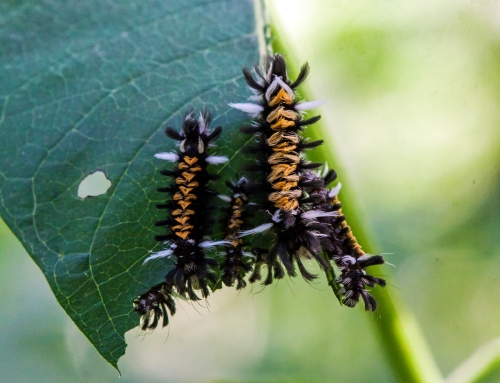As a wildlife photographer, I sometimes wonder what it would be like to be a studio photographer. Imagine being able to control the intensity and direction of the light, to choose my own background, to have a responsive subject, and to be able to move around and carefully compose images in my viewfinder. What if there were no wet grass or thorns or mosquitoes or ticks? Perhaps a studio photographer has a sense of control—a wildlife photographer lives in a world of unknowns, never knowing for sure exactly when and how a shooting opportunity will present itself nor how long it will last.
This is the time of the year when I focus my attention and my camera on tiny subjects and dragonflies and damselflies are among my favorites. Some of them are pretty accommodating subjects and will perch and pose, though many are elusive and hard to capture.
I sometimes struggle with the question of how to create cool and dramatic shots of these beautiful little creatures. How do I capture then in action, especially when I am so often using a macro lens and shooting at close range?
I wish I had an answer to these questions, a magical formula that would guarantee great results, but, of course, I don’t. Sometimes, though, things do come together and magic happens. That’s what I felt this past Monday when I was out looking for dragonflies. I was crouched on the wet sand trying to get some shots of a Common Sanddragon dragonfly, when a female Ebony Jewelwing damselfly (Calopteryx maculata) landed a few feet in front of me and began to oviposit in the vegetation at the edge of a small stream.
I was at a good distance to use the 180mm macro lens that I had on my camera. The lighting and background were beautiful. My subject was isolated, but there was enough of the environment in the foreground to give a sense of the location (and the green of the moss was wonderful).
Is it possible to create a dramatic macro action portrait with a two inch (50 mm) subject? For me, it’s rare that I am able to pull it off, but I’d like to suggest that it does happen and offer this image as evidence.
I go out with my camera with the hope that situations like this will arise in the uncontrolled environment in which I like to operate. I live for those moments.

Michael Q. Powell. All rights reserved.
Read Full Post »

























